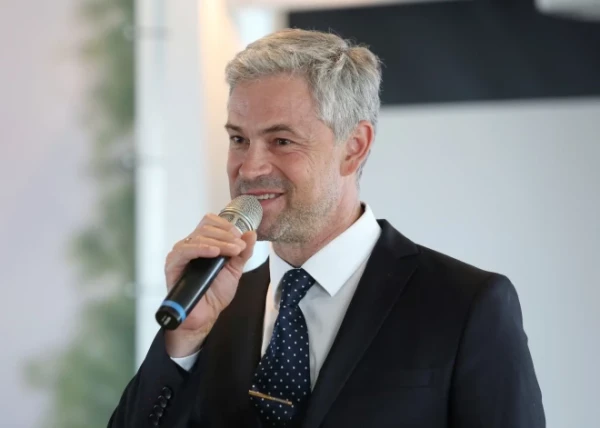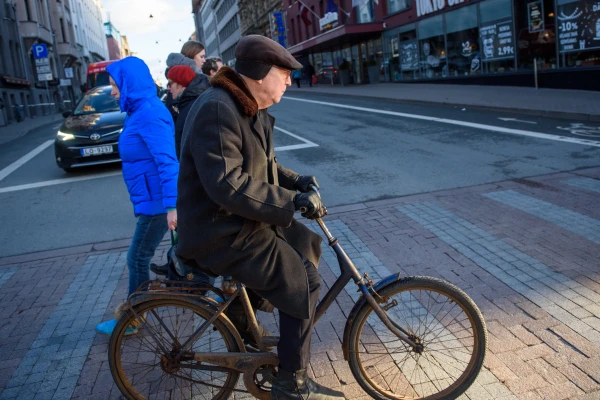
As of the beginning of this year, there were 208,240 young people aged 18 to 29 living in Latvia, accounting for 11.2% of the total population, according to data from the Central Statistical Bureau (CSB), reports LETA.
More than half of young people — 51.3% — were men, while 48.7% were women. In the overall population structure, the situation is the opposite: men — 46.4%, women — 53.6%.
At the beginning of 2025, the highest proportion of youth was in Kurzeme (11.7%) and Zemgale (11.3%), while the lowest was in Latgale (10.7%) and Vidzeme (10.9%). In the Riga region, the share of young people corresponded to the national average — 11.2%.
The largest share of youth was recorded in the Saldus and Kuldiga municipalities — 12.1% and 12%, respectively. The lowest was in the Adazi and Saulkrasti municipalities — 9.2% and 9.6%. Among large cities, the highest share of youth was in Liepaja — 12.3%, while the lowest was in Daugavpils — 10.2%.
The CSB notes that after reaching adulthood, young people are in no hurry to leave their parental home and start a family.
Data shows that 73.3% of men aged 18–24 and 49.8% of men aged 25–29 live with their parents without a spouse, cohabiting partner, or children. Among women, the figures are slightly lower — 67.2% for those aged 18–24 and 33.1% for those aged 25–29.
Some young people have already started their own families and live with a spouse or partner and/or children — 6.2% among 18–24-year-olds and 29.3% among 25–29-year-olds.
The CSB also indicates that each year, more residents under 29 obtain higher education, and the share of youth who have only received basic or lower education by this age is decreasing. A higher level of education is characteristic of generational change.
Since the 1980s, the share of young people with higher education has tripled. Among youth aged 20–24, this figure rose from 4.6% in 1979 to 12.1% in 2024, while among those aged 25–29, it increased from 13.5% to 37.1%, respectively.
According to educational institutions, in October 2024, 40.3% of young people aged 18–29 were students: 7.6% were studying in general education schools, 6.6% in vocational educational institutions, and 26.1% in colleges and universities. Women in this age group accounted for 53.3% of all students, with their share being higher in both general education (54%) and higher education (55.7%). Men more often chose vocational education — their share reached 57%.
In 2024, 55.3% of youth immediately after graduating from high school began studying at universities, 2.3% continued their studies in vocational institutions, while 42.4% did not continue their education. However, the CSB has no data on young people studying abroad.
In 2023, 32.1% of 24-year-olds in Latvia continued their education, and this figure has been increasing in recent years. This is higher than the average in the European Union (29.4%) and higher than in other Baltic countries: in Estonia and Lithuania, the corresponding figures are 25.4% and 24.6%. The highest figures were in Denmark (53.3%), Finland (49%), and Greece (42.2%), while the lowest were in Malta (14.6%) and Luxembourg (12%).
Data also shows that 34.7% of youth aged 18–29 did not visit or consult a family (general practitioner) doctor even once in the year, while 68% did not see a specialist doctor.
According to a household survey conducted by the CSB (EU-SILC), in 2022, 28.1% of youth had excess weight (body mass index over 25). Of these, 19.4% were women aged 18–29 and 35.6% were men of the same age. Obesity (BMI over 30) was recorded in 4.7% of young people (7% of men and 2.1% of women).
In 2022, 41.3% of youth aged 18–29 consumed fruits at least once a day, while 47.5% consumed vegetables. This is higher than the average among all residents of Latvia aged 16 and older (35.9% and 43.2%, respectively). Fruits were consumed daily by 46.7% of girls and 36.6% of boys, while vegetables were consumed by 52.5% and 43.3%, respectively.
Over the past 10 years, the share of youth smoking electronic cigarettes has doubled. Among women aged 15–24, the share of those smoking electronic cigarettes increased from 22.5% in 2016 to 44.2% in 2022, while among men of that age, it rose from 30.2% to 65%.
Per 100,000 residents, the highest share of patients diagnosed with mental or behavioral disorders is observed among youth aged 18–19. During the Covid-19 pandemic, this figure particularly increased, but in recent years it has been decreasing again, notes the CSB.












Leave a comment